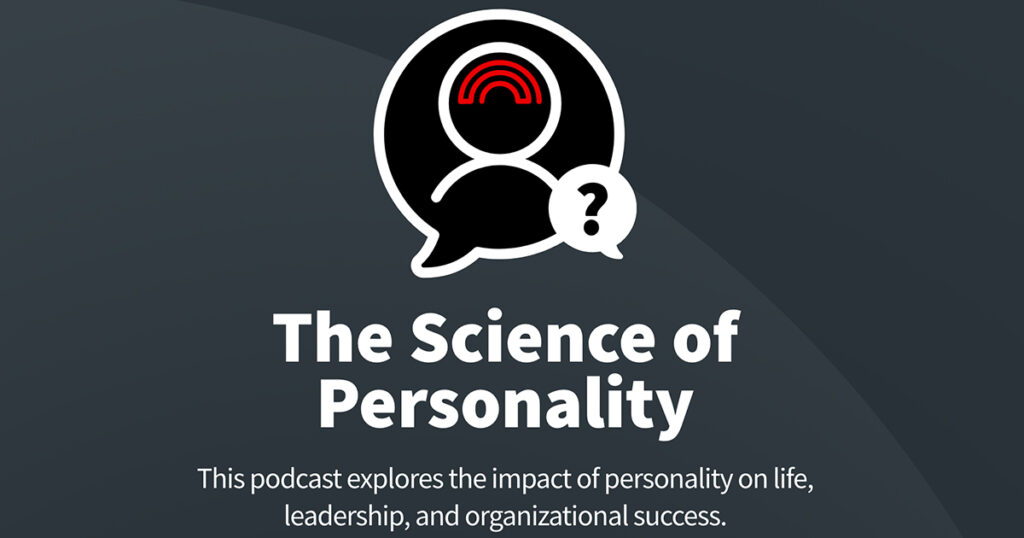
What do crying babies, airport goodbyes, and leadership development have in common? Plenty, according to attachment theory.
Recently on The Science of Personality, cohosts Ryne Sherman, PhD, chief science officer, and Blake Loepp, PR manager, talked with Peter Harms, PhD, professor of management at the University of Alabama, about attachment styles in the workplace.
Often overlooked by organizational psychologists, attachment styles arguably influence every relationship that humans build—leading to significant impact on major organizational outcomes.
Let’s dive into this discussion about how attachment affects leaders and employees.
The Basics of Attachment Theory
“Attachment theory is considered a grand theory in personality psychology because it's supposed to explain everything,” said Peter. The theory developed about a hundred years ago from an evolutionary perspective on infant and childhood vulnerability. As humans, we want proximity to other people who will nurture us, and when we are separated from that care, we become distressed; a baby cries when a caregiver leaves and is comforted at the caregiver’s return.
Our social nature affects everything about us: our childhood development, our interpersonal relationships, and our worldview. In short, attachment theory gets to the very roots of personality. (Speaking of roots, listen to our conversation about personality and genetics in episode 47 with Kathryn Paige Harden, PhD.)
Quick caveat: Attachment theory by no means suggests that anyone who has experienced childhood trauma is fated to have a certain personality. Rather, it describes a lens through which people tend to interpret and react to experiences.
3 Attachment Styles
The three common attachment styles can be described in terms of behavior when dropping off a loved one at the airport.
- Secure attachment - A securely attached person might hug or kiss their loved one and gaze after them for a few moments before leaving.
- Anxious attachment - A person with anxious attachment might embrace many times, talk of future reconnection, and not leave until necessary.
- Avoidant attachment - A person with avoidant attachment might say, “Have fun,” and leave immediately.
Attachment styles are best understood as dimensions on a continuum. People don’t have one exclusive attachment style but rather a pattern of behavior that we generally default to. “Attachment styles are just like personality,” Peter explained. “They tend to be fairly stable, but they're not immutable.”
In terms of the Hogan Development Survey (HDS), which measures derailers or overused strengths under stress, the two insecure attachment types loosely correspond to two scales: anxious to Colorful and avoidant to Reserved.
Attachment at Work
“Relationships are really important, and attachment is the personality psychologist’s best tool for understanding relationships,” Peter said, including relationships at work.
Secure workers tend to be more satisfied at work and have higher levels of performance in most jobs, while those who are more anxious or avoidant express less satisfaction with work and may be more likely to engage in counterproductive workplace behaviors. The anxious people might seem disruptive and clingy, and the avoidant people might seem antisocial and uncooperative.
Attachment theory holds that all people want love and security—even on some level from our leaders and coworkers. If, for example,anxious people are paired with secure leaders who are willing to give them the attention and connection they desire, they don’t feel triggered because their fears of abandonment or betrayal are assuaged.
Secure attachment in the workplace is connected to structure and consideration. Most workers want to know what will happen, what they are expected to do every day, and that somebody at the organization cares about them. Particularly given the Great Resignation, attachment theory speaks to our need to feel connected and engaged at work. Peter suggested that, after alienating workers through relationship-destroying remote work since 2020, it is not too surprising that employees are seeking to fill a psychological need by finding workplaces where they receive appreciation.
Attachment and Leadership
Strategic self-awareness is a key component of leadership development and organizational success. Leaders who understand attachment styles can build secure workplace relationships.
Secure and avoidant leaders tend to be more readily promoted, especially avoidant leaders who may conform to highly masculine “bro company” workplace cultures that value toughness and independence. Avoidant leaders are less likely to be aware of or able to foster the connection and security that employees desire.
Anxious leaders, in contrast, might be able to create employee satisfaction and positive team dynamics, but they often struggle with discipline and direction. They may worry about harming the relationship they have with their workers or driving their employees away, or worry about betrayal from their employees and peers.
To the far more numerous avoidant leaders, Peter advised, “Make sure there's someone in your organization that people can go to. If you can't necessarily be there for people emotionally, you can create the context where the organization is caring.”
The Rise of the Avoidant Dimension
The organizational implications of attachment style are critical. Originally, attachment data showed that about 60% of people were securely attached, 20% anxious, and 20% avoidant. But more recent surveys have shown that millennials and Gen Z have different dimensions of attachment, with only 40% secure, 20% anxious, and 40% avoidant.
“As humans, we desire a level of intimacy and relatedness that's been stripped from the workplace,” Peter said, referring to employees of fully remote organizations who have never met a leader or coworker in person. “We often talk about what has happened in the changes in the workplace through technical, transactional terms, but we have ignored the implications in human terms. That's why it's important to pay attention to things like attachment styles.”
Listen to this conversation in full on episode 54 of The Science of Personality. Never miss an episode by following us anywhere you get podcasts. Cheers, everybody!